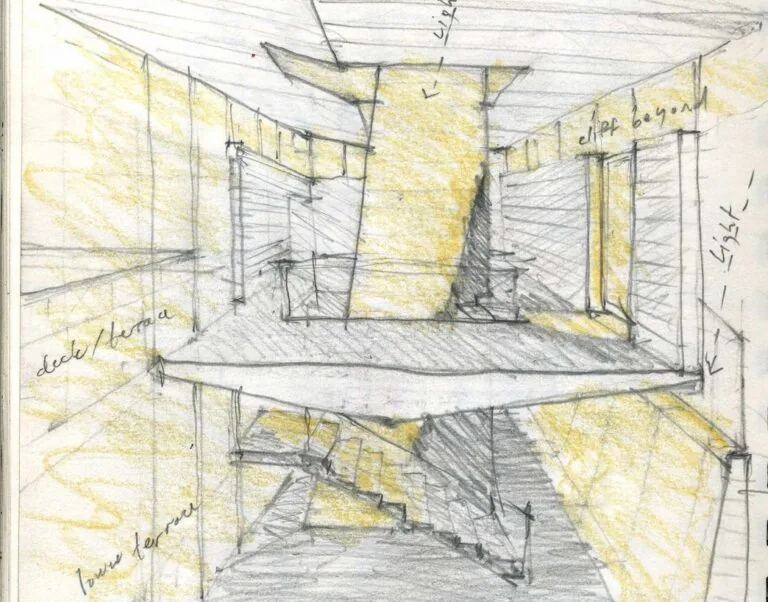Given typical construction methods, rectilinear spaces are easier to build. This leads to a predilection for the alignment of walls through levels, both for structure, and circulation. Working as an office boy back in the day, a senior draftsman put it to me like this, ‘You try to line things up, it looks better that way’. Symmetry is another natural order of design. From the Greeks and Romans we learn the power and beauty of platonic forms. However, during a term in Rome, I discovered that at a larger scale their buildings often rotate and collide in response to the site. In comparison, Renaissance Architects employed symmetry across large compositions with multiple wings, resulting in a rather stiff formality. In residential design, a strategy of local symmetry can work well, where a particular room, entry porch or façade employs symmetry, while the overall home responds more naturally to use and site. In a different approach, elements are set in a balanced asymmetry, exemplified by Japanese gardens and De Stijl compositions.
Other than aspects of alignment and balance in design, are the principles of energetic flow,an aspect of Feng Shui. If you consider space to be a fluid like water, this notion will make more sense. Aspects include avoiding direct alignment of doors, so incoming energy doesn’t fly right through a space and back out again. Also to be avoided are poison arrows, corners and other elements that can disrupt or fracture the flow of energy. I agree with many of these principles, but I think about them intuitively rather than as a set of rules. For a home, one strives to create a spatial flow like a gently flowing river, with a meandering course including small eddies, larger pools, and occasional rapids.
Colliding and curving forms signal a departure from the grid, adding complexity to a project. Angledgeometries can create a unique response to the particulars of a site. So it is with curves as well. The notion of a curvaceous earth dwelling half buried in the ground, or a sleek elliptical house rising out of a field are ones that appeal to me should the opportunity arise… As in life, there is always a plus element of design, learning from each project and trying something different each time. The challenge remains to balance the eternal aspects of firmness, commodity and delight, Palladio’s trinity of architectural design. These considerations and more can be contained within the parti. For the designer who considers deeply how form and narrative come together, a plan sketch can convey a wealth of thought and information that might not be apparent to the casual eye.
